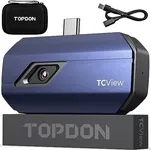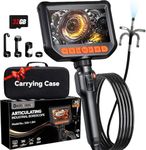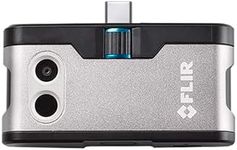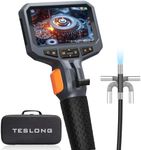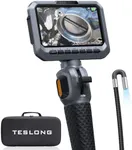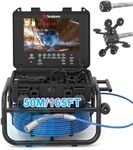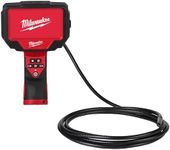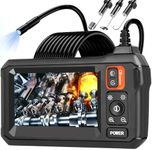Buying Guide for the Best Inspection Cameras
Inspection cameras, also known as borescopes or endoscopes, are versatile tools used for viewing and inspecting hard-to-reach areas. They are commonly used in plumbing, automotive, and construction industries, as well as for home inspections. When choosing an inspection camera, it's important to consider the specific tasks you need it for, as different models offer various features that can significantly impact their performance and usability. Understanding the key specifications will help you select a camera that best fits your needs.Camera ResolutionCamera resolution refers to the clarity and detail of the images or videos captured by the inspection camera. Higher resolution cameras provide clearer and more detailed images, which can be crucial for identifying small defects or issues. Resolutions can range from standard definition (SD) to high definition (HD) and even 4K. If you need to see fine details, such as in mechanical inspections or detailed plumbing work, opt for a higher resolution. For general inspections where detail is less critical, a lower resolution may suffice.
Probe Length and DiameterThe probe length and diameter determine how far and into what spaces the camera can reach. Longer probes allow you to inspect deeper or more extensive areas, while smaller diameters enable access to tighter spaces. Probes can range from a few feet to several meters in length, and diameters can vary from a few millimeters to over a centimeter. Choose a probe length and diameter based on the typical spaces you need to inspect. For example, longer and thinner probes are ideal for plumbing, while shorter, thicker probes might be suitable for automotive work.
LightingLighting is crucial for visibility in dark or enclosed spaces. Most inspection cameras come with built-in LED lights at the tip of the probe. The brightness and adjustability of these lights can vary. Adjustable lighting allows you to control the illumination based on the environment, which is important for avoiding glare or shadows. If you often work in very dark areas, look for cameras with brighter or adjustable lighting options to ensure you can see clearly.
Display Type and SizeThe display type and size affect how you view the images or videos captured by the camera. Some inspection cameras have built-in screens, while others connect to external devices like smartphones or tablets. Built-in screens can vary in size, typically ranging from a few inches to larger displays. Larger screens provide a better viewing experience, especially for detailed inspections. Consider whether you prefer the convenience of a built-in display or the flexibility of using your own device, and choose a size that suits your viewing needs.
Water and Dust ResistanceWater and dust resistance are important for durability and functionality in various environments. Inspection cameras often need to operate in wet, dusty, or dirty conditions, so having a camera with a good resistance rating ensures it can withstand these environments. Look for cameras with an IP (Ingress Protection) rating, which indicates the level of protection against water and dust. If you frequently work in harsh conditions, choose a camera with a higher IP rating to ensure longevity and reliability.
Battery LifeBattery life determines how long you can use the inspection camera before needing to recharge or replace the batteries. Longer battery life is beneficial for extended inspections or when working in areas without easy access to power. Battery life can range from a couple of hours to a full day of use. Consider how long your typical inspections last and choose a camera with a battery life that meets or exceeds your needs. If you often work in remote locations, a camera with a longer battery life or the option to use replaceable batteries might be advantageous.
